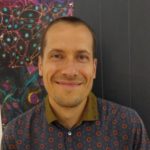Link to Pubmed [PMID] – 29401440
Link to DOI – 10.1016/j.bpj.2017.11.019
Biophys J 2018 Jan; 114(2): 425-436
Hair cells of the inner ear can power spontaneous oscillations of their mechanosensory hair bundle, resulting in amplification of weak inputs near the characteristic frequency of oscillation. Recently, dynamic force measurements have revealed that delayed gating of the mechanosensitive ion channels responsible for mechanoelectrical transduction produces a friction force on the hair bundle. The significance of this intrinsic source of dissipation for the dynamical process underlying active hair-bundle motility has remained elusive. The aim of this work is to determine the role of friction in spontaneous hair-bundle oscillations. To this end, we characterized key oscillation properties over a large ensemble of individual hair cells and measured how viscosity of the endolymph that bathes the hair bundles affects these properties. We found that hair-bundle movements were too slow to be impeded by viscous drag only. Moreover, the oscillation frequency was only marginally affected by increasing endolymph viscosity by up to 30-fold. Stochastic simulations could capture the observed behaviors by adding a contribution to friction that was 3-8-fold larger than viscous drag. The extra friction could be attributed to delayed changes in tip-link tension as the result of the finite activation kinetics of the transduction channels. We exploited our analysis of hair-bundle dynamics to infer the channel activation time, which was ∼1 ms. This timescale was two orders-of-magnitude shorter than the oscillation period. However, because the channel activation time was significantly longer than the timescale of mechanical relaxation of the hair bundle, channel kinetics affected hair-bundle dynamics. Our results suggest that friction from channel gating affects the waveform of oscillation and that the channel activation time can tune the characteristic frequency of the hair cell. We conclude that the kinetics of transduction channels’ gating plays a fundamental role in the dynamic process that shapes spontaneous hair-bundle oscillations.

